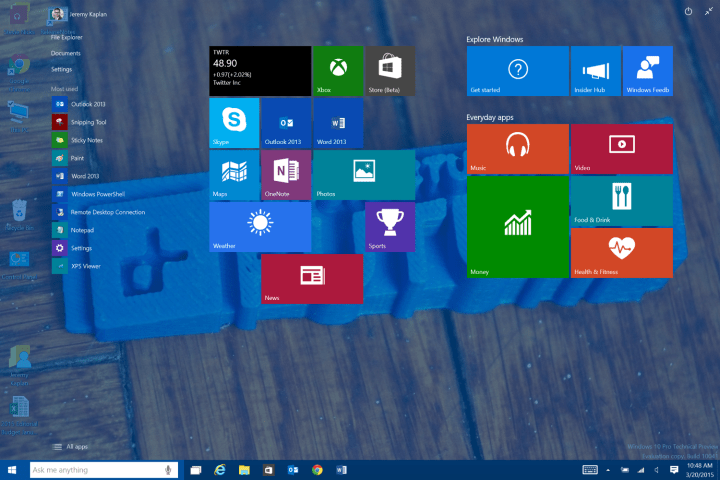
It turns out there’s one sync feature that won’t make the leap from 8.1 to 10, however; Start Screen and App sync. In Windows 8.1, apps downloaded from the Windows store automatically appeared in the All Apps list on other owned devices (they didn’t auto-install, but tapping them began the download). Windows 8.1 also remembered each user’s preferred Start Screen arrangement, including Live Tile position and size, and could sync that between PCs.
Paul Thurrott of Windows Super Site noticed this was no longer working in Windows 10 Insider, and asked Microsoft about it. The company’s official response confirmed the feature’s demise, stating “we found customers typically want to personalize the Start layout to match the device they are using.”
While removing a feature is rarely seen as a positive, Microsoft does have a point. A layout that looks great on the desktop may not look good on a 10-inch Surface 3 tablet. The new Start Screen would worsen the problem because it is not separate from the new Start Screen – it’s just a smaller version of it. If Start preferences did sync, the result might look quite ridiculous for users who own both a small 2-in-1 and a giant, 27-inch desktop monitor.
The death of app sync is not quite as logical. Having a purchased app appear on every device does make sense, and help users remember what they’ve acquired. However, it could also result in an absurdly long app list after a few years of using Windows. Microsoft seems to be playing it safe.
I think the best solution to this problem would be a new setting that lets users turn sync on and off, though that would raise the question of how users would know the setting exists. Perhaps we’ll see such a feature in a future build of Windows 10 – though Microsoft has no plans as such at this time.
Editors' Recommendations
- Scores of people are downgrading back to Windows 10
- You’re going to hate the latest change to Windows 11
- How to adjust screen resolution in Windows 11 and older
- Beware! The latest Windows 11 update might crash your PC
- The Windows 11 Android app dream is dead


